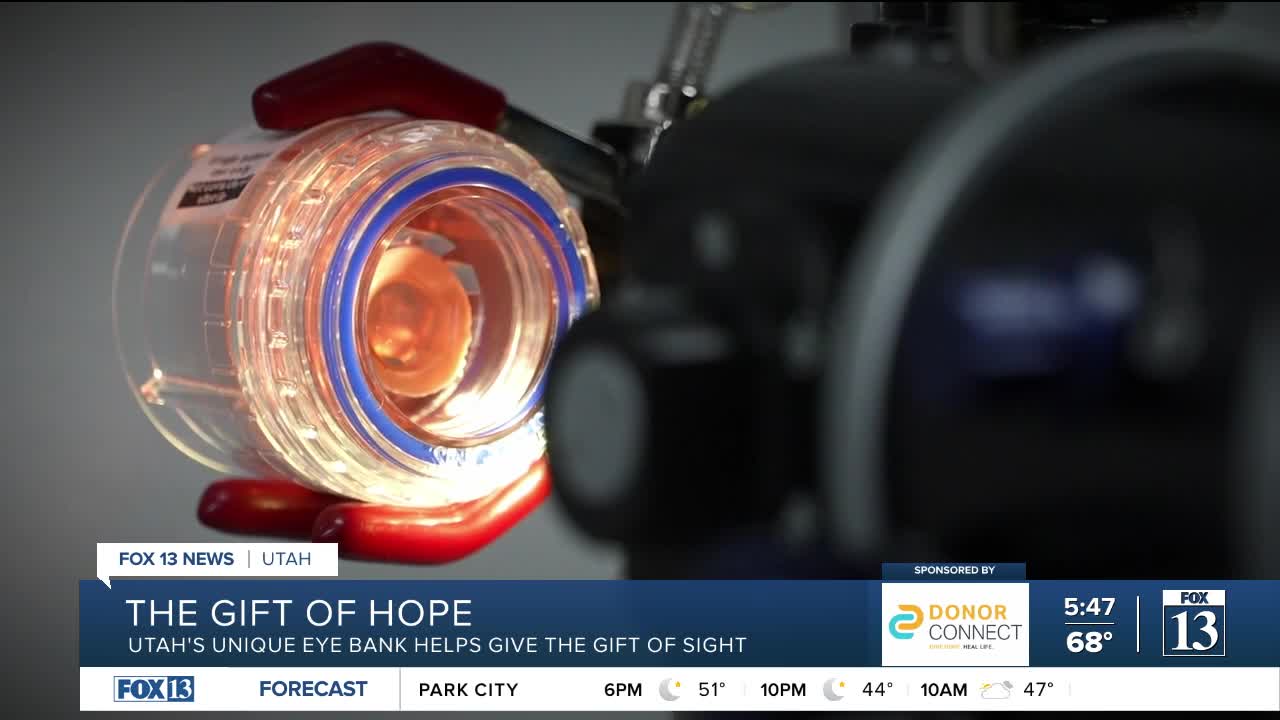November marks National Eye Donation Month — a time to recognize the donors whose generosity gives others the gift of sight.
One Utahn knows that gift firsthand. What began as an unexpected medical crisis during a church mission ultimately led him to a life-changing corneal transplant — and a new purpose helping others navigate the organ donation process.
Joshua White was serving a mission for The Church of Jesus Christ of Latter-day Saints in Jamaica when his vision suddenly deteriorated.
“People always say you don't know what you have until it's gone, right? And that was definitely true with my vision,” White said. “I woke up one day and my eye had a lot of pain and it was white colored. We took some photos, we sent them to an ophthalmologist here in Utah.”
White was diagnosed with keratoconus, a condition that thins and distorts the cornea. It caused a painful complication known as corneal hydrops — and left him in need of a cornea transplant.
“I had a corneal transplant when I was 21,” he said. “The whole process was done. I was finally able to put a contact lens in and see again, and obviously it's transformed my life.”
Restoring sight in Utah
White’s donated cornea was recovered, evaluated, and prepared by the Utah Lions Eye Bank — the only facility in the state that provides corneal tissue for transplant.
“The Utah Lions Eye Bank - we are affiliated with the John A. Moran Eye Center,” said director Chris Hanna. “Our goal and our focus is to restore sight to as many individuals as possible.”
Hanna says Utah currently has no waiting list for corneal transplants, thanks to donors whose tissue can restore sight for people facing vision loss or untreatable pain.
“When we dispatch a recovery technician, they procure the tissue, bring the tissue back here to the eye bank,” Hanna explained.
From donation to transplant
One of those technicians is Chimdi Ihediwa, who recovers corneas for both transplant and research.
“I go out and recover corneas for transplant and research,” he said. “This is my favorite job I have ever had. I love it a lot.”
Back at the eye bank, ocular services director Sally Hicken oversees the microscopic evaluation of each cornea to confirm it is healthy and safe to use.
“We will take pictures of it, count the cells, and then do an additional evaluation on our slit lamp microscope,” Hicken said. “We want to make sure the tissue is healthy enough to be transplanted.”
Technicians then move the cornea into a clean room, where it is carefully prepared for each individual recipient.
“They're prepping the tissue for the specific kind of corneal transplants,” Ihediwa said.
Once ready, the tissue is sent to surgeons in Utah, across the U.S. and even around the world.
“It's really fulfilling because we can kind of turn something so tragic into something potentially positive,” Ihediwa said.
A donor’s impact
White later learned that his own donor was only able to give corneas — a reminder, he says, of how vital eye donation can be.
“There was a lot of different emotions all at once,” he said.
The experience inspired him to pursue work at DonorConnect, Utah’s organ procurement organization.
“I recently started my new position as Organ Utilization Manager,” White said. “Basically, [I] work with the transplant list and make sure that every viable organ finds a home in somebody and extends somebody’s life.”
For Hanna, the impact of eye donation is clear and lasting.
“Individuals and recipients are just so deeply grateful for the gift that they’ve received,” he said. “There is always going to be a need for human eye tissue for transplant.”
White says he hopes more Utahns consider becoming donors.
“It’s a difficult thing, but it’s a beautiful thing,” he said. “And I think if we can all do that together, the world would be a better place.”



